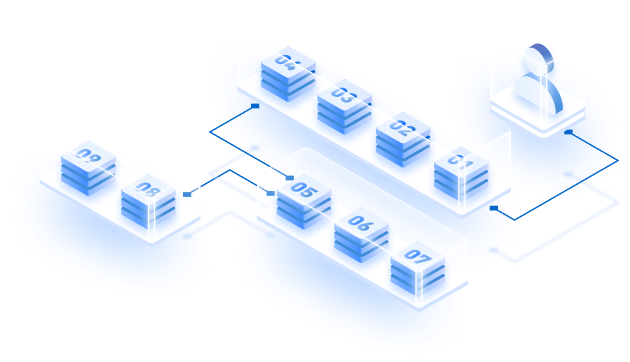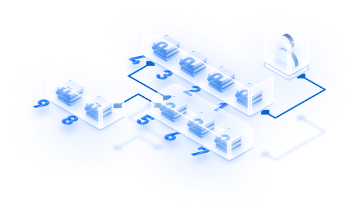There’s a narrative war in action on Crypto Twitter(CT) as we are reading this where a section of the CT family is saying build on top of L2s/ rollups because they are fast, cheap and easy. But at the same time, Avalanche is also taking the market by storm for DeFi apps, institutions and gaming. As an entrepreneur / startup owner or an aspiring project investor to build something innovative, which way should the development team move?
Hard to say because there’s no black and white while choosing a technology stack, because no stack is like a silver bullet solving all the problems. In this blog, we shall find where you should go as a project owner by mapping a comparison war between : Avalanche L1s vs layer 2 rollups.
But before we do that, let’s start from the very beginning;
A Recap of Avalanche L1s and L2 Rollups
Avalanche L1s are sovereign blockchains with their own defining rules regarding operations like deciding the tokenomics, membership of validators, and other custom specifications. That being said, if you want your application to match with near instant settlements, Avalanche L1s are perfect. But in case you are wondering that having to decide tokenomics, validator sets, and customization would make all L1s on Avalanche as separate islands, such is not the case due to Avalanche Warp Messaging.
Layer 2 Rollups, on the other hand, are like a second layer to blockchain, which is responsible for addressing the scalability barrier of Layer 1s only and you also have to deal with some limitations while using a rollup like bridging complexities, dual fees and security dependency. So, how do you decide which way to go while going on a stack war with Avalanche L1s vs Layer 2 Rollups? Let’s find that out below by looking at few of the parameters;

Key Factors To Consider When Deciding To Choose Avalanche L1 vs a Layer2 Rollup
1.Flexibility / Sovereignty
When considering a blockchain to build your solution on top of it, if you are looking forward to;
- The ability to setup a custom VM
- Decide your own gas token
- Set up validator level control
- Define custom governance logic
- Setup open participation
These are certain things that you cannot get while using a rollup because they are tied to their supportive L1s chain for security, operations and governance. But despite the limitations, if you still want to deploy on top of a rollup and build from the very scratch, it would demand: (i) incurring the building cost (ii) taking security responsibility (iii) bootstrapping trust (iv) managing interop challenges (v) dealing with liquidity fragmentation and (vi) complying with regulatory scrutiny
But this is where Avalanche L1s abstract all of these because these L1s support custom VM logic, gas token optimization, and open participation at the protocol level, no additional build up needed. Due to this, applications launching on top of Avalanche L1s are getting flexibility on their own terms without having to face any chain limitations;
"It needed to be an L1 for the sovereign block space, for the customization, but also having a lot of integrations like EVM compatibility and tapping into crypto native applications"
— Avalanche🔺 (@avax) February 16, 2025
In a recent Empire podcast @santiagoroel broke down his decision to build an L1 on Avalanche pic.twitter.com/jDFwVObqNU
2.Transaction Fees
Transaction fees are the make or break element while choosing a technology stack. For example, suppose you are doing a 100$ swap across protocol and for the same, you have to pay $5 dollars in fees. Now, to skip these odds, layer 2s were created to help you bundle transactions on top of a rollup and pay almost negligible fees for the same. But in the process, while using a layer 2, they exposed a few key bottlenecks/barriers;
- Interop
- Liquidity fragmentation
- High fees for settlements / if Layer 1 is clogged or going through extreme network activity as shown from the image below.
"you can't compare an L2 against an L1"
— Token Terminal 📊 (@tokenterminal) April 22, 2024
we believe you absolutely can!
in our models, an L2's Expenses section explicitly includes the 'extra' costs that a rollup has to pay for to compensate for NOT being an L1
this is modularity, also known as SaaS 😁🫡 pic.twitter.com/16hwpDlAH7
But Avalanche L1s have resolved this through a series of upgrades. For example, ACP-125 upgrade has made structural adjustments that have significantly reduced the Avalanche transaction fee in 2025. And due to this upgrade, more than 80% of transactions are operating near the base fees on the Avalanche L1 as shown in the chart below. How is such a lower fee reduction happening? Because these L1s are using the C-chain for public data and a reduction of fees on C-chain has concurrently reduced the fees on the Avalanche L1s by as high as 96 with fragmenting liquidity or interoperability.
As a result of this, layer 2s which were known for providing the lowest fees could only compete with Avalanche L1s and not outsmart it as shown in the table below;
| Chain/ Rollups | Simple Transfer (ETH/AVAX) | Token Swap (e.g., Uniswap/Trader Joe) |
| Avalanche | $0.01 – $0.03 | $0.05 – $0.15 |
| Arbitrum | ~$0.05 – $0.10 | ~$0.30 – $0.70 |
| Optimism | ~$0.05 – $0.15 | ~$0.40 – $0.80 |
| Base | $0.02 – $0.10 | ~$0.25 – $0.60 |
| ZkSyncEra | ~$0.01 – $0.05 | ~$0.15 – $0.50 |
| Starknet | ~$0.03 – $0.10 | ~$0.20 – $0.60 |
| Linea | ~$0.02 – $0.08 | $0.30 – $0.55 |
| Scroll | ~$0.03 – $0.08 | ~$0.25 – $0.50 |
| Mantle | $0.02 – $0.06 | ~$0.20 – $0.40 |

3.Time to Finality
Often the rhetoric revolves around having those magical numbers like 5,000 TPS, 10,000 TPs or at maximum 50,000 TPS on your blockchain. But TPS is incomplete with TTF or Time To Finality. Why? Because you might have 50,000 TPS, but if the latency is very high, it would delete a lot of use-cases from existence. Now, with rollups, there’s a 2-3 second window for soft finality and 10 minutes for a hard finality, which means, you get the assurance that your transaction is through. That being said, suppose you need very low latency like micro-seconds for finality, rollups might not be suitable for the same for hosting use cases like;
- Cross-chain Swaps or Bridging
- Real-time Games / On-chain Gaming
- High-frequency Trading / DeFi Arbitrage
- Tokenized Real-World Assets (RWA)
But with Avalanche L1s, it is possible to achieve sub second finality with the time span of less than <1s required for the above use-cases. As per the Messari Report , so far Avalanche has outsmarted most of the blockchains in clocking TTF to give rise to advanced use-cases to be built on top of it.
4. Unlimited Scalability
With new advanced narratives dominating the crypto space like RWAs, DePin, DeFi, Clob models and more, the desire for scaling has been a tipping point of discussion in the Web 3 space. But at present, when you are building on top of a rollup for meeting unlimited scaling, there are multiple fronts on which rollups need to evolve like;
- Complexity in managing overheads, maintenance, monitoring and inter rollup communication for horizontal scaling
- Load balancing and latency bottlenecks
- Data synchronization and mitigating security vulnerabilities
- Optimizing cost of operations.
Avalanche L1s utilizes the subnet architecture to abstract load across multiple blockchains to overall amplify the network capacity for meeting near hyper scalability. So, due to this set-up, despite the influx of activity on its chain, it is possible to delegate tasks to different blockchains to meet the speed without bloating the primary blockchain in the process.
Now, it is not like layer 2 rollups are bad after reading this far, and Avalanche L1 is a magic bullet, because it is not wise to look at things from a black and white perspective. Rather every stack has a different purpose to serve because there are apps which might be okay with partial customization or they don’t need very low fees or super quick TTF.
In its place, they want robust security of a growing ecosystem like Ethereum and its network effects. For such projects, there’s no better choice than a Layer 2 rollup. But if you have a different requirement where you want to launch a CLOB based DEX, or super scalable gaming application where you need instant finality, unlimited scalability, simple interop and absolute custom specs, Avalanche l1s could be a right pick here. And if you have such a requirement and you want a reliable partner to help you launch your application, Zeeve can be a reliable choice.
Build Your Avalanche L1 Chain with Zeeve
Zeeve takes pride in providing the best blockchain ecosystem critical for the success of any project. By using the core analysis of Avalanche L1s (Formerly known as Subnets) vs Layer-2 solutions, Zeeve can help you in choosing the blockchain that can best fit into your requirement. We Zeeve offers all the things needed for seamless launch of L1s (Formerly known as Subnets) and L2s, such as scalable nodes, white-labeled explorers, testnet faucets, data indexers, and plug-n-pay development tools.
In addition to this, our services include security and reliability with ISO 27001 and SOC 2 Type 2 compliance and enterprise-level SLA. For more information on how Zeeve is simplifying the launch of L1s(Formerly known as Subnets), Rollups, appchains, and all the other layer-2 scaling solutions, connect with us. Drop us your queries via email or schedule a one-to-one call for detailed discussion.




